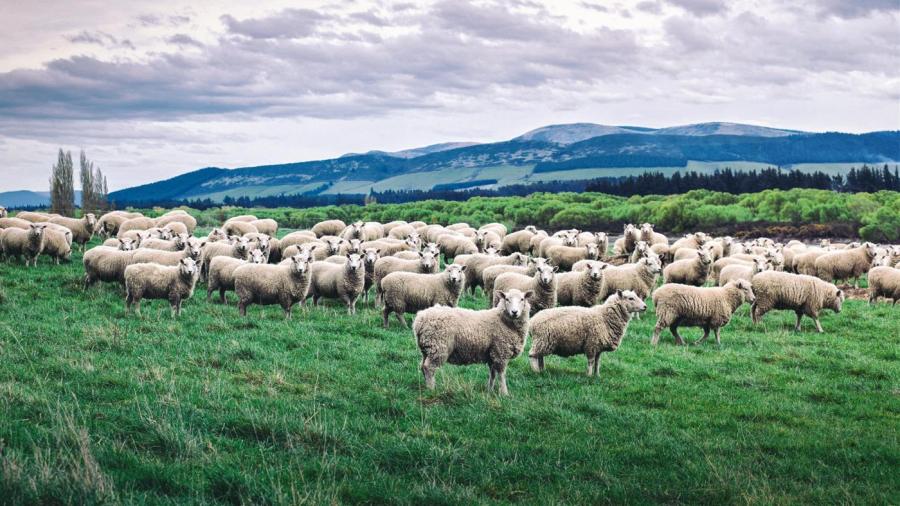What Is a Group of Sheep Called?

A group of sheep can be called a flock, herd, or drove. Sheep may also be collectively referred to as a down, drift, fold, and trip. A ruminant (cud-chewing) mammal, sheep are mostly kept and bred as livestock for food and wool production. Sheep are among the species that have the greatest number of different breeds among farm animals, next only to poultry with about 1,000 distinct breeds.
Flock, Herd, and Drove of Sheep
The word “flock” is used for a group of similar animals, particularly for sheep, goats, and even birds. To be considered a flock, the animals are understood to be herded, are feeding or kept together under the supervision of someone such as a shepherd.
Example: This flock produces the finest wool.
Herd, on the other hand, is usually applied to larger farm animals such as cattle but may also be used to refer to a group of sheep. Like the word flock, herds are often understood to be under the care of someone such as a shepherd or a herder.
Example: The herd panicked trampled through their holding pen.
Drove refers to a number of livestock of the same kind that are driven toward a particular direction or location. It often applies to a number of sheep, cattle, or swine that are being led by a herder.
Example: The drove of sheep was taken out of the pen to graze on pasture.
Down, Drift, Fold, and Trip of Sheep
In Middle English, the word “trip’ is used to refer to a group that is moving together. In modern British dialect, a “trip” refers to a group of animals such as sheep, goats, or fowl. Down refers to a breed of sheep that came out of Southern England.
A “fold” is used just like the word flock, to refer to a group of sheep. An enclosure where a group of sheep is being kept is also called a fold. Drift is a noun derivative of the verb “drifan,” which is identical in meaning to the Dutch word “drift,” which means herd or flock.
Collective Nouns
As the term implies, collective nouns are words that refer or represent a group or collection of people, animals, or things as a single unit. Collective nouns are a subset of count nouns but should not be confused with countable or mass nouns.
Countable or count nouns are nouns that are quantified according to their size while mass nouns are used for objects that are uncountable like water, sugar, or education. Collective nouns are similar to countable nouns but, instead of being quantified by size, the nouns are referred to as a single entity, such as a flock or herd of sheep.
Sheep in the US
Estimates place the population of domestic sheep to more than 1 billion all around the world. Of the 1,000 different breeds, 60 breeds of sheep can be found in the United States. The state of Texas holds the record for having the highest population of sheep, with approximately 740,000 head of sheep or about 14.2 percent of sheep in the U.S. California ranks second with 550,000 and Colorado with 365,000.
Interesting Sheep Facts
- Sheep’s wool does not stop growing: Domesticated sheep, particularly those who are bred for their wool like the Merino, need to have regular shearing. Their wool will keep growing, unlike wild sheep that naturally shed their wool each season.
- A pound of sheep’s wool can yield approximately 10 miles of yarn: Because a sheep can produce up to 30 pounds of wool, some 300 miles of yarn can come out of one sheep.
- Sheep have a nearly 360-degree vision.
If a sheep fell on its back, it will have trouble righting itself: If you see a sheep in such a predicament, you may want to call the attention of its owner. A sheep that fell on its back is called a “cast sheep.”





